When your online store has hundreds or even thousands of pages, how do you create useful, customized content for each one?
–
The solution: a content generation tool for e-commerce, created by Senuto.
This post is inspired by a talk given by Dominika Jakubik (OBI), Paweł Warowny (Performance Media), and Damian Sałkowski (Senuto) at the ‘Kulturalnie o SEO 2024’ conference.
Introduction
To understand this project, it’s important to ask: ‘Why is SEO important for OBI?’
It’s about more than just boosting online visibility, improving Google rankings, or increasing traffic and sales. They see real value in creating content that supports the ROPO effect—where people research online but buy in-store.
In OBI’s August 2023 study, 42% of people said they planned to check out or buy products they found online at a physical store instead, which was the main reason they didn’t complete purchases online.

This trend ties to OBI’s product types. For items like tiles, flooring, or plants, most customers prefer to see them in person to make sure they’re right for their space.
The problem at hand
Major challenge for the OBI team is consistently providing useful, engaging online content. In the DIY industry, this is crucial because many customers start researching products online, where OBI can inspire needs that customers may later fulfill in-store.
OBI focuses on:
- expanding their tips and inspiration section,
- aligning content with the seasonal nature of their products
- creating detailed knowledge hubs.

Managing a website of this size is hard to do with just an in-house team, so it’s natural to seek outside support.
This is how the partnership between OBI and Performance Media began.
Challenges
In a fast-paced, constantly changing world, it’s impossible to keep up with every new development and tech trend. That’s why the OBI team decided to focus on areas where they can make the biggest impact. This choice also reflects their awareness of the upcoming SGE (Search Generative Experience) and the time and effort needed to create quality content.
Optimizing category pages
The team decided to start optimizing product-related content, beginning with category pages and their descriptions.

Category pages are essential for any e-commerce site because they:
- help distribute PageRank,
- make it easier for users to navigate the site, and
- help customers find the products they need.
In 2023, 31% of all sessions on OBI’s website that led to a purchase began from a category page (Source: WebTrekk, OBI 2023)—a valuable insight for the business.
Category descriptions are like a well-organized storefront display, but their effectiveness is often debated.
To explore this, Damian Sałkowski ran a quick study to see if these descriptions affect SEO. The results showed that pages with descriptions ranked for far more keywords in the TOP 50 than those without.
For instance, pages with descriptions of about 5,000 characters ranked for an average of 14 keywords, compared to only 4 for pages without descriptions. Although the impact on TOP 10 and TOP 3 rankings was smaller, the difference was still notable.

Seeing the clear benefits of detailed descriptions, it became essential to establish a solid content process. Before working with Senuto, the process was similar across content types, with differences mainly in how outlines were created. Performance Media had specific guidelines for each type of text, adjusting elements like:
- the table of contents,
- FAQs,
- number and size of images,
- text length, and
- internal linking structure.

Despite being complex, this process produced good results. For instance, in 2021, the agency saw a 29% increase in keywords ranked in the TOP 10.
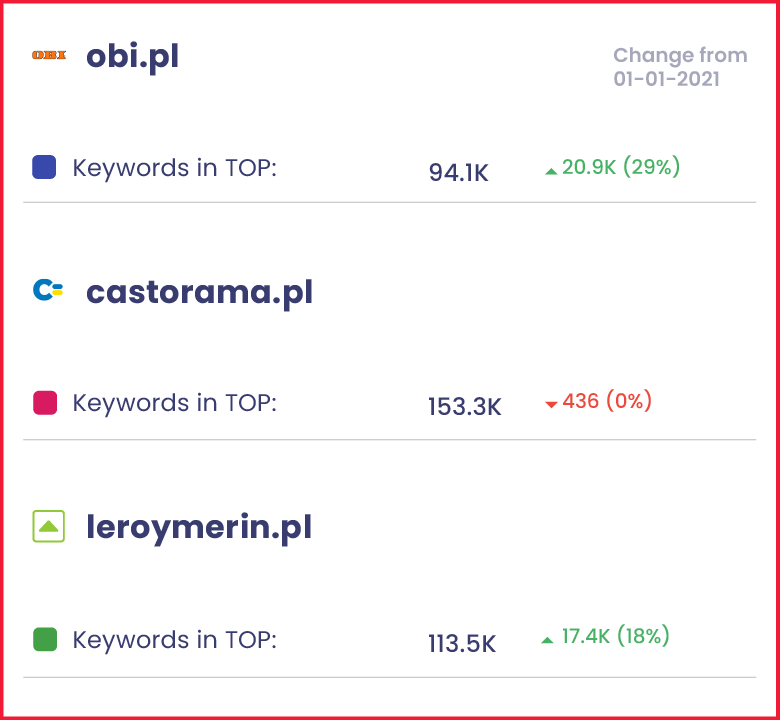
However, algorithm has been changing since 2023 which makes things much more challenging.

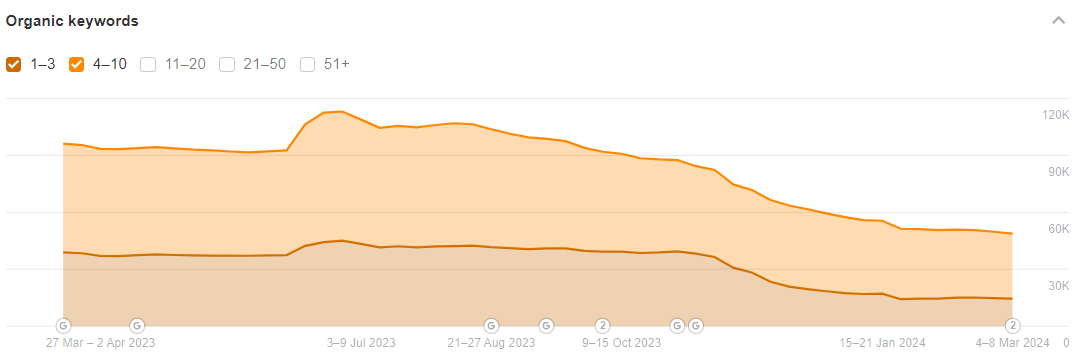
A major drop in visibility prompted Performance Media to search for solutions. Their analysis revealed that product pages were responsible for 72% of the visibility losses in Q4 2023.
Unfortunately, they couldn’t make immediate changes due to a pending update to OBI’s e-commerce platform, so they turned their focus to the next biggest issue: category pages.
The solution: A collaboration between OBI, Performance Media, and Senuto
To keep up with market changes and speed up content production, OBI launched a project to automate content creation for their category pages.
For this, OBI and Performance Media brought in Senuto to help.
Requirements
Top-Notch Content Quality: Content that would be both useful for readers and optimized for Google’s algorithms.
User-friendly tool: A tool that, once given basic details and the URL, could automatically identify the type of content needed. The team’s sample text provided a template for the structure.
Efficiency in time and cost: Given the project’s scale, the old approach wasn’t feasible—it would have been too costly and resource-intensive.
Seamless expansion to other markets: a single tool will be able to support content efforts across the entire OBI network.
AI safety: Using AI for a big online store needs to be done carefully, especially with Google’s new rules about spam. Performance Media wanted to be sure that making lots of new content would be safe for the website.
Four main influencing factors:
- Only 2% of OBI’s website are category pages
- These pages have been around for many years
- AI writes only some of the content on these pages
- New content is added slowly, bit by bit
The Project Team

This large project required cooperation between three expert teams:
OBI team was responsible for:
- Selecting appropriate category pages for content updates
- Reviewing and approving all content
- Publishing approved content on their website
- Managing project progress from the client perspective
Performance Media’s role included:
- Coordinating work between OBI, agency, and tech partners
- Overseeing the entire content creation process
- Ensuring content quality and natural language flow
- Developing and refining AI prompts for better results
Senuto delivered technical support by:
- Developing the content generation tool
- Establishing efficient work processes
- Maintaining technical oversight and system stability
The Execution Process
Challenges:
Team Coordination: The initial challenge was getting all three parties on the same page. We had to decide on communication channels, set deadlines, establish goals, and figure out how to track progress effectively.
Category Page Selection:
- Not all pages worked with our tool
- Careful URL filtering was needed
- Removed categories with:
- Keywords showing wrong intent
- Seasonal fluctuations during testing
Content Optimization:
- Enhanced content through detailed AI prompts
- Focus on conversational tone
- Improved text structure for better readability
- Made content more engaging for customers
Testing Environment
- Tool development and testing continued despite:
- Ongoing visibility challenges
- Declining performance metrics
Developing the tool
While ChatGPT is powerful, its limitations in handling store-specific content and maintaining context across long descriptions made it unsuitable for our specialized e-commerce needs.
Category Complexity
Creating category descriptions presents unique challenges in e-commerce. While it might seem simple, the same category name can represent entirely different product collections across different stores. This makes standardized solutions less effective for specific store needs.

Keyword Research Challenges
Traditional keyword research methods face significant limitations in this context. While tools like Senuto effectively analyze competitor rankings in search results, the identified keywords don’t always match a specific store’s inventory. This mismatch occurs because different stores stock varying products, even within similarly named categories.
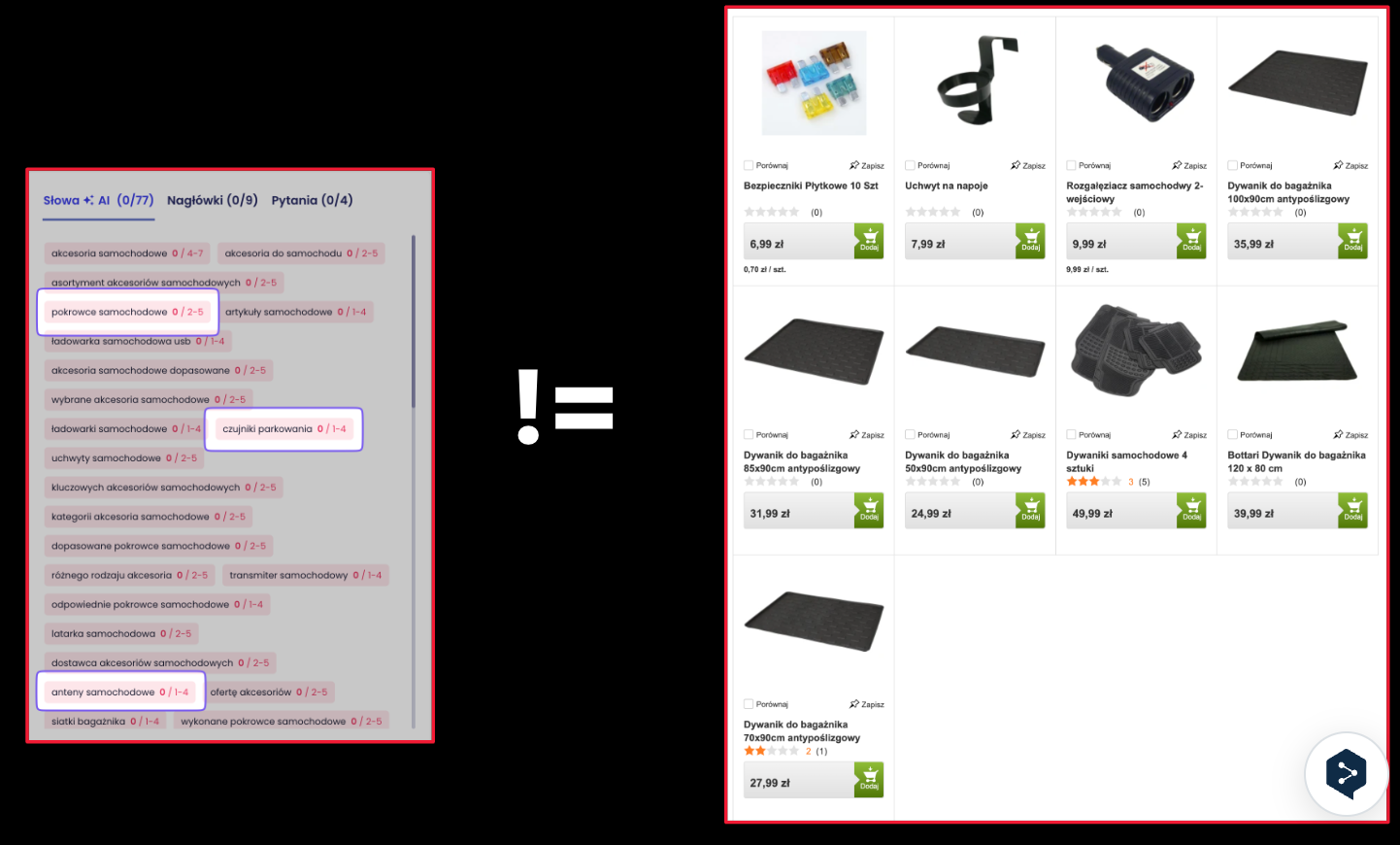

AI Model Limitations
Current research reveals important limitations in language models like ChatGPT. Despite its impressive 128,000-token context window, the model often struggles with maintaining context throughout longer texts. A common issue is the loss or omission of information from the middle sections of content, leading to incomplete or inconsistent outputs.

Future Improvements
The landscape of AI technology is rapidly evolving. New models, such as Claude 3 Opus with its expanded 200,000-token context window, show promise in addressing these limitations. These advanced models are designed to maintain better information retention and provide more comprehensive content processing, potentially offering solutions to current challenges.
Key Quality Factors
When working with AI-generated content, we focus on three critical aspects:
Readability
Text should be easy to understand and flow naturally for the average reader. This means using clear language and appropriate sentence structures.
Perplexity Explained
- In technical terms: Measures how well AI predicts and generates text
- In practice: Shows how natural and coherent the content is
- Low perplexity: Text flows naturally and makes sense
- High perplexity: Text feels chaotic or confusing
Burstiness in Content
Burstiness refers to how language elements are distributed throughout the text. It can appear in two ways:
– Uneven word distribution (clusters of specific terms)
– Inconsistent complexity (mixing simple and complex sentences)
Content Quality
Good AI content should maintain consistent language level, even distribution of technical terms, natural flow between sentences, and balanced complexity throughout the text.
Following this directive helps to create better content that reads naturally and serves its purpose effectively.

Behind the Scenes
Our solution operates on two main levels, combining sophisticated technology with careful content planning.



The Technical Foundation: Backend
We built a powerful system that does the heavy lifting behind the scenes. It automatically scans OBI’s pages, analyzes product categories, and uses multiple AI models to create content. While the backend is complex, we made sure the user experience stays simple – just upload a file, click a few buttons, and get your content.

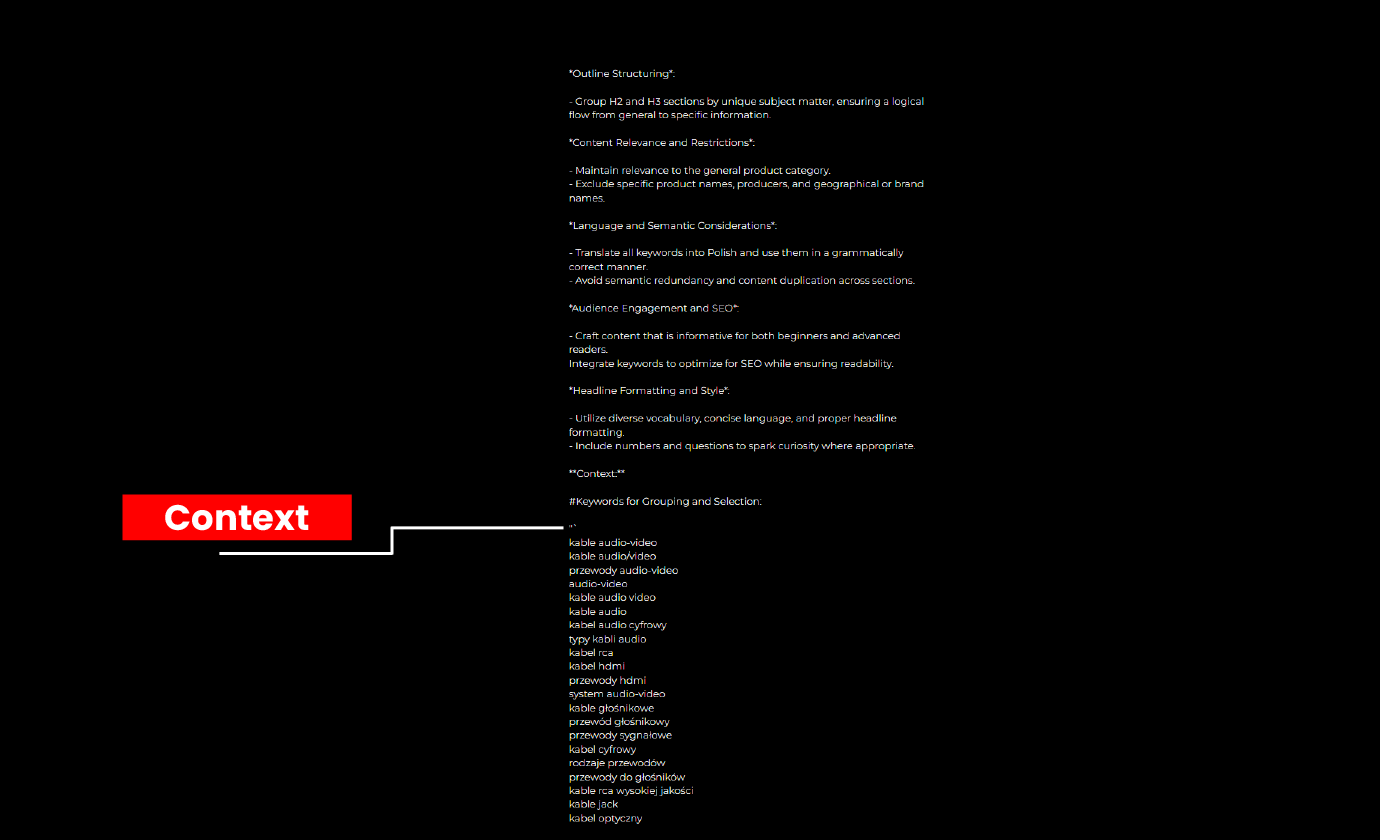
Smart Content Creation
To get the quality right, we developed a comprehensive prompt system:
– Each description uses 16 specialized prompts
– Three different AI models work together
– Processing power equals a medium-sized book (120,000 tokens)
– Every character gets backed by 36 context tokens
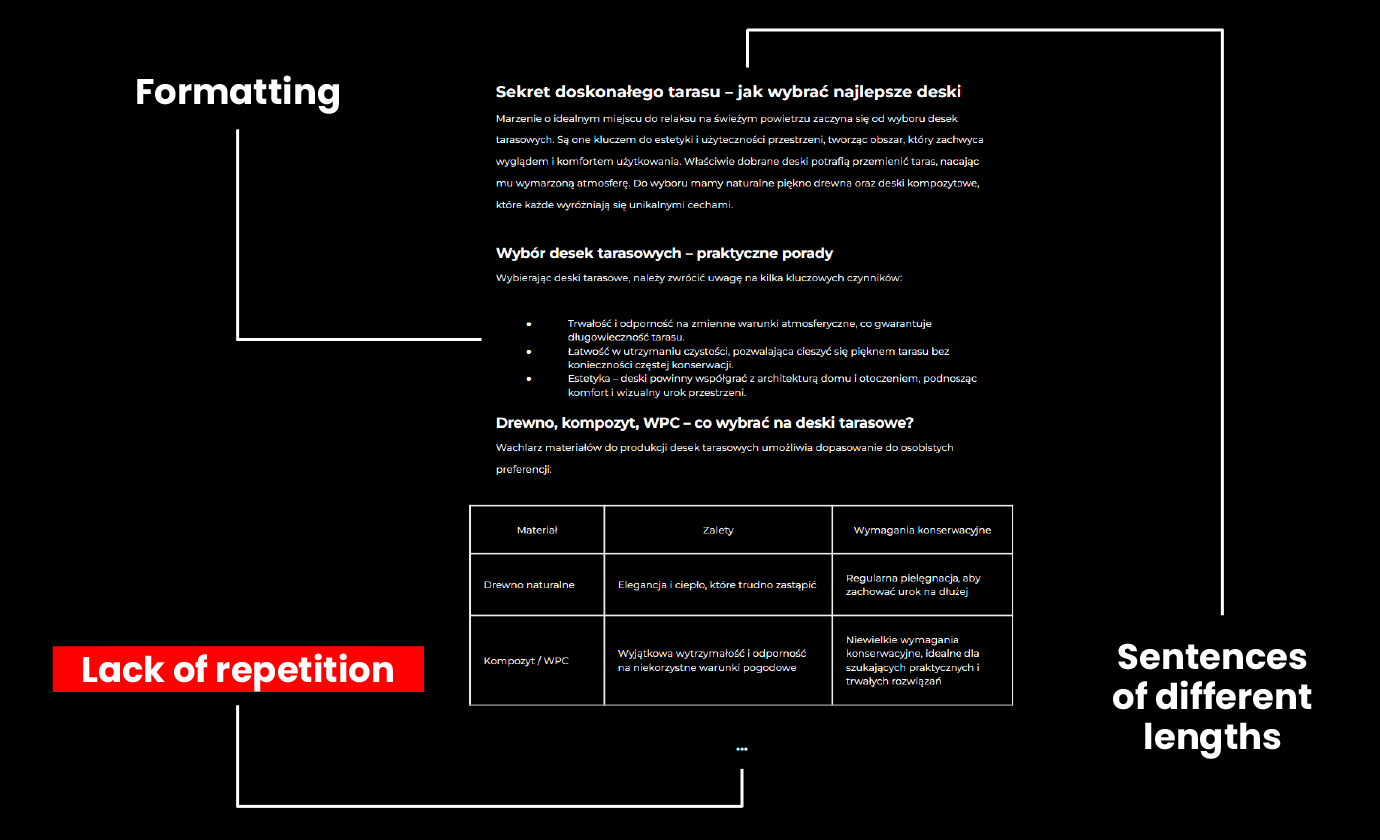
This careful approach ensures our content passes AI detection tests while staying natural and relevant.

Early Results Look Promising
We’re still in the testing phase, which started February 20, 2024. While it’s too early for final conclusions (especially with seasonal changes and ongoing SEO activities), we’ve already seen significant improvements and accomplishments:
- Created and deployed 300 category descriptions
- Streamlined the content production process
- Maintained quality while reducing human input
- Dramatically cut costs per text (from 300 PLN to 50 PLN)
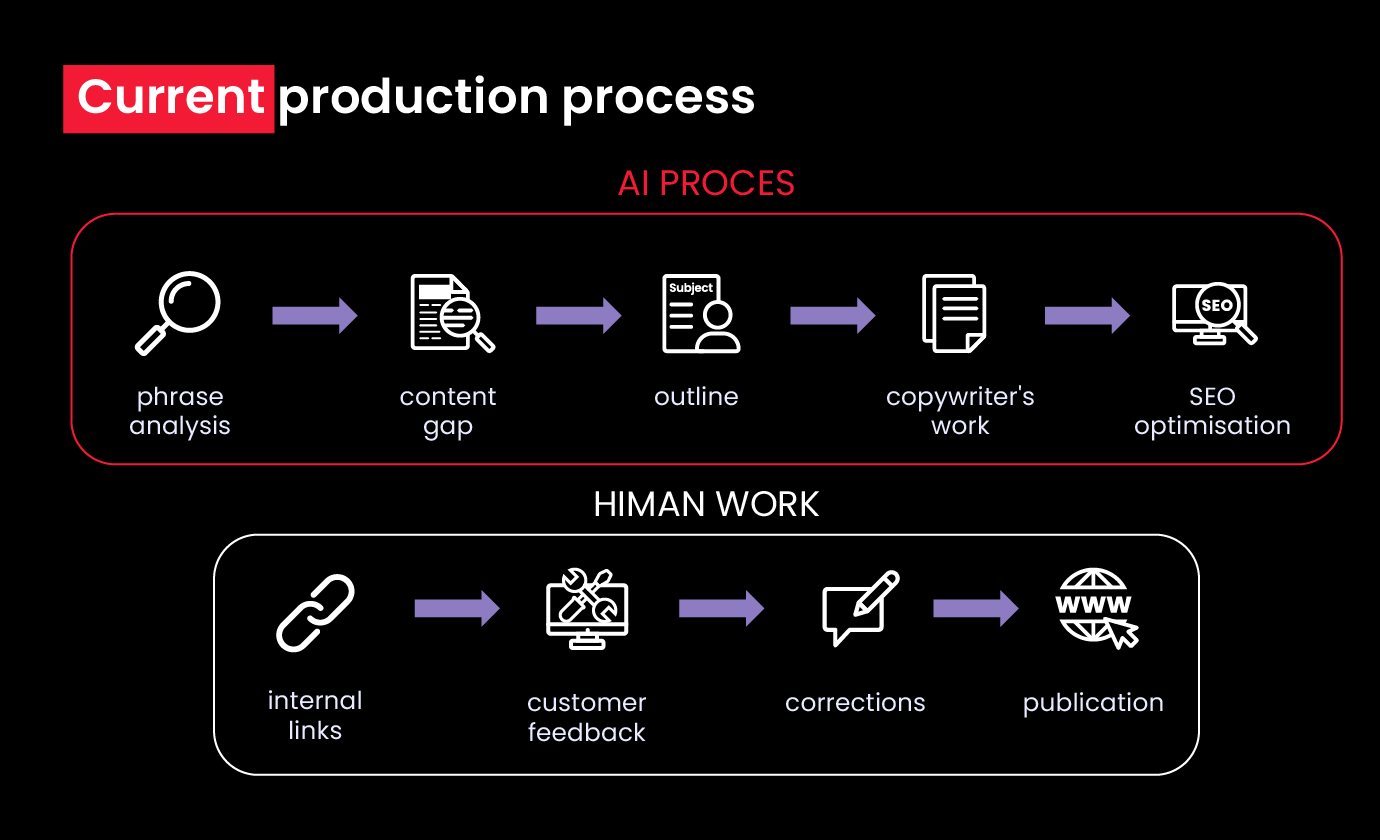

The Bottom Line
The numbers tell a compelling story – we’re looking at potential savings of over 4 million PLN across all markets. That’s a 6x reduction in content production costs, without compromising on quality.
Note: We’re still monitoring results carefully, considering factors like seasonal keyword changes and varying content exposure times.
What’s Next?
Building on our success and going global
The results speak for themselves – this project has proven its worth and is here for good. We’re excited to continue our partnership and take the next steps in improving OBI’s online presence.
We’re planning to roll this out across all markets, bringing the same level of quality content to every customer, wherever they shop.
Next Big Move: Product templates descriptions for the Polish market
We’re particularly eager for the launch of new product page templates in the Polish market. This gives us a perfect opportunity to transform product descriptions from basic information into powerful sales tools.
Our goal? Help customers make better choices by presenting products in a clear, engaging way that highlights their real value.
What’s on the horizon?
We’ve mapped out several key improvements:
Better Organization
- Rethinking how categories are structured
- Making product categories more intuitive
- Ensuring names match what customers actually find in store
Smarter Content
- Adding helpful links between related products
- Connecting relevant category pages
- Making it easier for customers to find what they need
We’re not starting from zero. Our existing technology gives us a strong foundation – now it’s just about fine-tuning and perfecting what we’ve built.
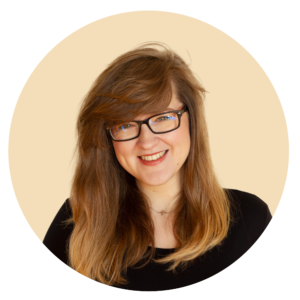 Iza Sykut
Iza Sykut